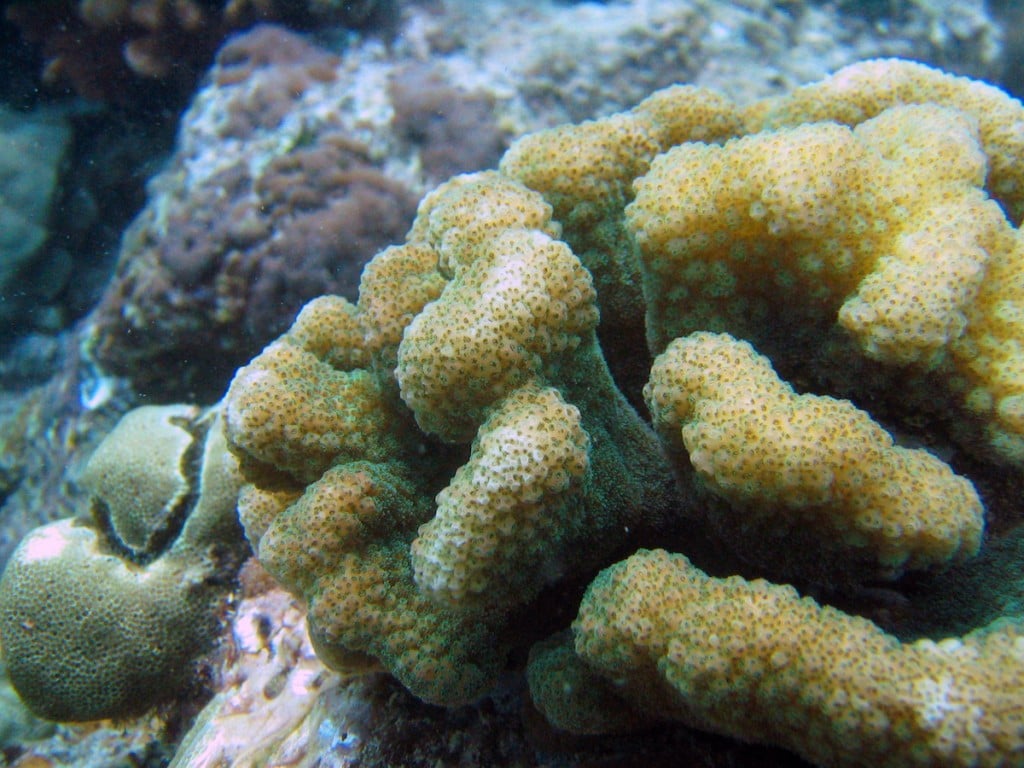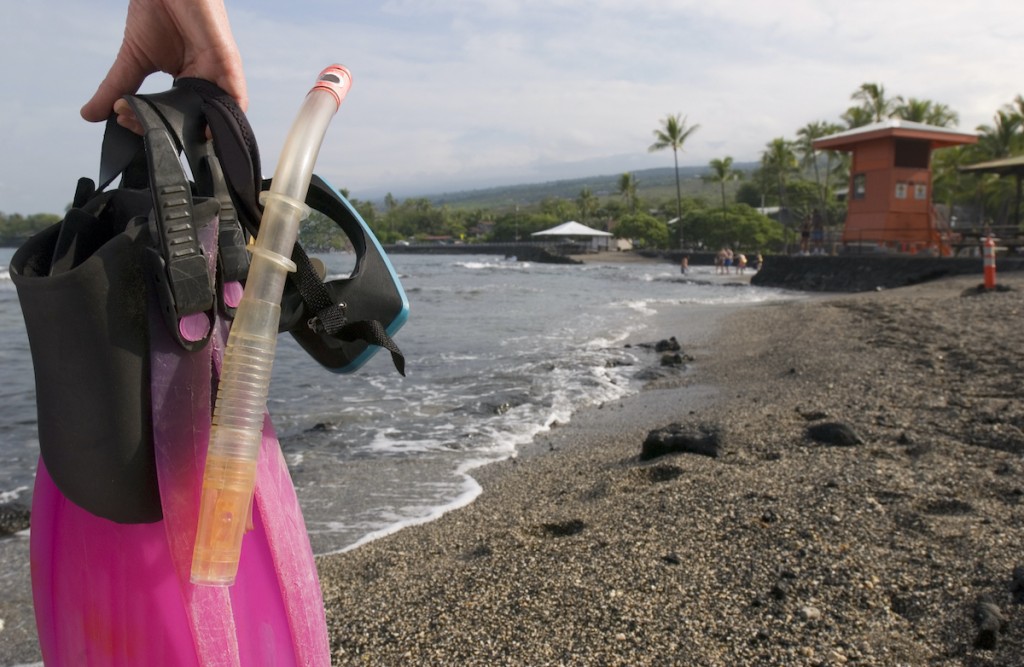Kahaluʻu Beach Park in Kona Closed for Coral Spawning
From May 28 to June 5, the popular bay on Hawaiʻi Island will be closed to help the vulnerable cauliflower coral.

If you’ve ever snorkeled in Hawaiʻi, you’ve probably seen it—and you probably didn’t know how important it was to Hawaiʻi’s ecosytem.
Cauliflower coral (Pocillopora meandrina)—called koʻa in Hawaiian— is a surge-tolerant species of reef-building coral that you often find in exposed shorelines around the Islands. As its name indicates, this coral resembles the cruciferous vegetable, with a dense skeleton, sturdy branches and symmetrical head formation. It protects Hawaiʻi’s shorelines and provides habitat for fish and crabs. Early Hawaiians used koʻa like sand paper to file or sand wood objects.
Once abundant on shallow coral reefs along the west side of Hawaiʻi Island, the cauliflower coral has experienced high bleaching and mortality rates and the population in areas like Kahaluʻu Bay are in serious decline. According to the nonprofit Center for Biological Diversity, the shallow-water coral species has been devastated by ocean warming, with its coverage around the Islands declining by 36% from 1999 to 2012.
So when this coral needs to spawn, we need to help.
The state is closing Kahaluʻu Beach Park from May 28 to June 5 to allow the cauliflower coral to spawn without human interruption.

Kahaluʻu Beach Park on Hawaiʻi Island is a popular beach for snorkeling and swimming.
Photo: Getty Images/ElFlacodelNorte
“While the park is closed, we are asking everyone to avoid snorkeling or swimming in the bay,” said Cindi Punihaole, director of The Kohala Center’s Kahaluʻu Bay Education Center. “During these spawning events, corals emit reproductive materials known as gametes into the water column, which are carried by the tides to mix and generate planktonic coral larvae. When given a chance to settle undisturbed, the gametes have a greater chance of settling and growing in the bay.”
For the past three years, the County of Hawaiʻi has worked with The Kohala Center to close the park during specific moon phases in mid- to late-spring and to educate visitors about this natural phenomenon and the importance of not disturbing the corals at this time.
“We totally support this voluntary measure as natural reproduction events are critically important,” said Brian Neilson, Hawaiʻi Department of Land and Natural Resources Division of Aquatic Resources (DLNR-DAR) administrator. “With the absence of daily visitors and subsequent reduction in physical damage and impact of chemical sunscreens, growth and recovery along the shoreline has already been documented. Research has shown that it can take up to 24 hours for corals to successfully reproduce and settle properly.”
According to DLNR-DAR and Eyes of the Reef Network, cauliflower coral was once abundant on shallow coral reefs along West Hawaiʻi, including Kahaluʻu Bay. Environmental stressors and elevated ocean temperatures impacted West Hawaiʻi in 2015 and again in 2019, leading to the catastrophic bleaching and mortality of more than 90% of the cauliflower coral population in Kahaluʻu Bay.
“It is our hope that visitors and community members will honor this sacred, natural process by giving our cauliflower corals the peace and space they need in order to reproduce,” Punihaole said. “It is vital that we do everything we can to rebuild Kahaluʻu’s coral community so that we can all continue to enjoy and benefit from a healthy reef ecosystem for generations to come.”


